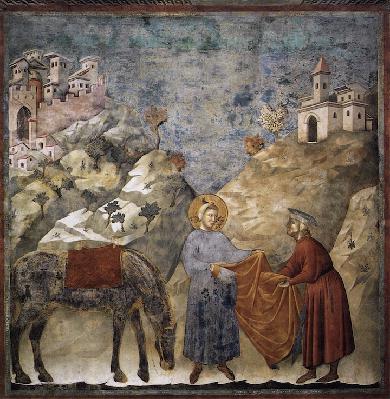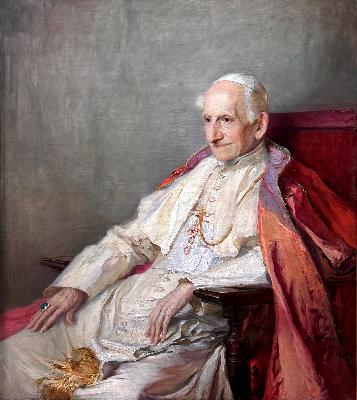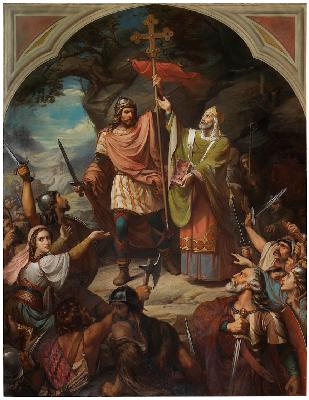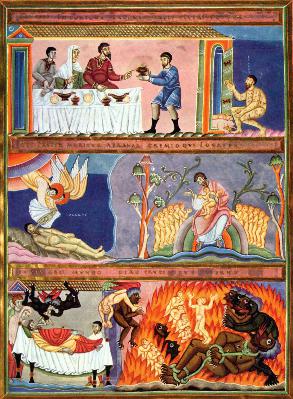When German Catholics Fought Back
Update: 2025-10-10
Description
By Casey Chalk
There was a time when German Catholics fought for the faith. One hundred and fifty years ago, half the bishops of Prussia were imprisoned, as were hundreds of parish priests, leaving more than a thousand parishes orphaned. All of them had refused to cooperate with various Prussian laws, often called "May Laws," intended to suffocate the independence of the Catholic Church in favor of an "ecumenical" brand of Protestantism. German lay Catholics responded by providing hiding places for clergy, paying fines clergymen incurred from the state, and purchasing bishops' furniture at auction. And they were just getting started.
As Roger Chickering explains in his recent book The German Empire, 1871-1918, this battle between the German State and Catholics was years in the making, and shows a Catholic Church in Germany that was orthodox, pious, and deeply fervent. It is not only a demonstrable difference from a German church today, which is hemorrhaging members, but also likely explains why the German-American experience - which included such a large percentage of Catholics - was itself so vibrant, giving us such saints as St. John Nepomucene Neumann and St. Marianne Cope.
The conflict in Germany began in 1837, when the Prussian government incarcerated the archbishop of Cologne over a dispute regarding mixed marriages between Catholics and Protestants. In the decades that followed, German Catholicism was reinvigorated. In 1844, more than half-a-million Catholics made a pilgrimage to an exhibition of the Holy Coat in Trier. There was also a dramatic increase in the number of religious organizations: between 1837 and 1864, the number of monasteries in Bavaria quintupled.
This concerned many German Protestants, particularly liberals and those in positions of government, who believed that the fulfillment of German unification and the Protest Reformation required the destruction of Rome's power in Germany. To disempower the Catholic Church in Germany, these parties reasoned, would remove a foreign intruder from the German body politic, a relic of a superstitious past, and usher in a single Protestant German national church.
Unfortunately for Catholics, Protestant liberals and their allies enjoyed a majority in the 1871 Reichstag of the new imperial Germany, and exploited that power to introduce a new provision to the federal penal code, stipulating imprisonment of up to two years for any clergyman who addressed affairs of state in a manner likely to disturb the public peace. The "pulpit paragraph" was the opening salvo in what came to be known as the "culture war" or Kulturkampf.
A suite of further anti-Catholic legislation followed. One law empowered the state to remove clergymen from positions they had previously held as local school inspectors. Another forbade religious orders from teaching in state schools. Yet another banished the Jesuits and several other orders from Germany altogether. Still others demanded that German clergy be educated at German universities, and that clergy pass a "culture test" that was not required of Protestant theology students. Papal disciplinary actions were made subject to Prussian state oversight.
In response, Pope Pius IX declared that the duty of Catholics to obey secular authority was valid only so long as the state "ordered nothing against God's commandment and the Church." In 1873, the bishops forbade Catholics from complying with the May Laws. This did not deter the Prussian parliament, which banned all Catholic religious orders from Prussia and introduced compulsory civil marriage. Chickering observes: "The liberals abandoned their political ideals, this time religious toleration, freedom of assembly, and the equal protection of the laws."
By 1876, all of Prussia's twelve Catholic bishops were either in prison or exile. Approximately 200 clergymen were fined or imprisoned, along with more than a hundred Catholic newspaper editors. Twenty Catholic newspapers were closed down.
That sa...
There was a time when German Catholics fought for the faith. One hundred and fifty years ago, half the bishops of Prussia were imprisoned, as were hundreds of parish priests, leaving more than a thousand parishes orphaned. All of them had refused to cooperate with various Prussian laws, often called "May Laws," intended to suffocate the independence of the Catholic Church in favor of an "ecumenical" brand of Protestantism. German lay Catholics responded by providing hiding places for clergy, paying fines clergymen incurred from the state, and purchasing bishops' furniture at auction. And they were just getting started.
As Roger Chickering explains in his recent book The German Empire, 1871-1918, this battle between the German State and Catholics was years in the making, and shows a Catholic Church in Germany that was orthodox, pious, and deeply fervent. It is not only a demonstrable difference from a German church today, which is hemorrhaging members, but also likely explains why the German-American experience - which included such a large percentage of Catholics - was itself so vibrant, giving us such saints as St. John Nepomucene Neumann and St. Marianne Cope.
The conflict in Germany began in 1837, when the Prussian government incarcerated the archbishop of Cologne over a dispute regarding mixed marriages between Catholics and Protestants. In the decades that followed, German Catholicism was reinvigorated. In 1844, more than half-a-million Catholics made a pilgrimage to an exhibition of the Holy Coat in Trier. There was also a dramatic increase in the number of religious organizations: between 1837 and 1864, the number of monasteries in Bavaria quintupled.
This concerned many German Protestants, particularly liberals and those in positions of government, who believed that the fulfillment of German unification and the Protest Reformation required the destruction of Rome's power in Germany. To disempower the Catholic Church in Germany, these parties reasoned, would remove a foreign intruder from the German body politic, a relic of a superstitious past, and usher in a single Protestant German national church.
Unfortunately for Catholics, Protestant liberals and their allies enjoyed a majority in the 1871 Reichstag of the new imperial Germany, and exploited that power to introduce a new provision to the federal penal code, stipulating imprisonment of up to two years for any clergyman who addressed affairs of state in a manner likely to disturb the public peace. The "pulpit paragraph" was the opening salvo in what came to be known as the "culture war" or Kulturkampf.
A suite of further anti-Catholic legislation followed. One law empowered the state to remove clergymen from positions they had previously held as local school inspectors. Another forbade religious orders from teaching in state schools. Yet another banished the Jesuits and several other orders from Germany altogether. Still others demanded that German clergy be educated at German universities, and that clergy pass a "culture test" that was not required of Protestant theology students. Papal disciplinary actions were made subject to Prussian state oversight.
In response, Pope Pius IX declared that the duty of Catholics to obey secular authority was valid only so long as the state "ordered nothing against God's commandment and the Church." In 1873, the bishops forbade Catholics from complying with the May Laws. This did not deter the Prussian parliament, which banned all Catholic religious orders from Prussia and introduced compulsory civil marriage. Chickering observes: "The liberals abandoned their political ideals, this time religious toleration, freedom of assembly, and the equal protection of the laws."
By 1876, all of Prussia's twelve Catholic bishops were either in prison or exile. Approximately 200 clergymen were fined or imprisoned, along with more than a hundred Catholic newspaper editors. Twenty Catholic newspapers were closed down.
That sa...
Comments
In Channel
























